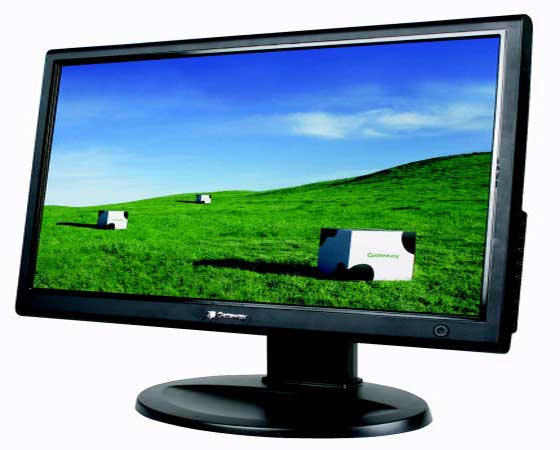There are different characteristics of LCD monitors that we need to consider before we purchase them. LCD monitors have different screen resolutions, the larger the display, the higher the screen resolution. The lowest screen resolution is usually 1366 x 768, but smaller models for special purposes, can be available in the local market. In general, we should choose the monitors based on requirements and it is probably a bad idea to give retail store cashiers a large, high resolution LCD display. Another thing to consider is aspect ratio or the ratio of the vertical pixels to the horizontal pixels. Typical CRT monitors have 4:3 aspect ratio, while widescreen LCD screen have 16:9 or 16:10 aspect ratio. Widescreen displays could provide more immersive multimedia experience, because we could see more things horizontally.
We should also consider response time and it is essentially how fast the monitor could respond to commands for displaying objects on the screen. It would take some time before current could pass through all the electronic circuitry, until the object is shown clearly on the screen. In general, LCD monitors have fast response time, but we should make sure that the display is responsive enough to remove any residual bright streaks. This is an important factor when we purchase LCD monitors for gaming. We should also check whether the monitor has good viewing angle. Image is generally the brightest and the most vivid when we see it directly on the front. Good LCD display should require straight viewing and one sought after characteristic is the ability to see objects on the screen clearly even from 75 degree or more.
Brightness is the ability of monitor to display color and radiate more light. Many newer monitors are particularly bright and users should have the ability to adjust brightness, so they can determine the level of brightness that’s comfortable for their prolonged uses. The right level of brightness should depend on personal choice, because people who work on bright areas may also need very bright monitors. Some LCD monitors have embedded sensors that can automatically adjust brightness depending on the surrounding environment. Image quality of the monitor is also very important and it is quite advantageous to choose monitors with superior image quality. Our biggest concern should be about acquiring the best video and image quality. CRT monitors have limited options in terms of image quality enhancements and many newer LCD display could offer users clear, crisp and precise images.
It is clear that LCD monitors are the relatively new standard in computing world as CRT monitors slowly subside into obsolescence. There are many LCD monitors in the market, each with their own unique features and cutting edge advantages. We should carefully check all the details and characteristics of LCD monitors, before we are sure to purchase it. In some cases, it may not be necessary to replace our CRT monitors if they are still working great, but eventually we will need to replace them, because no electronic devices can last forever.










Comments are closed.